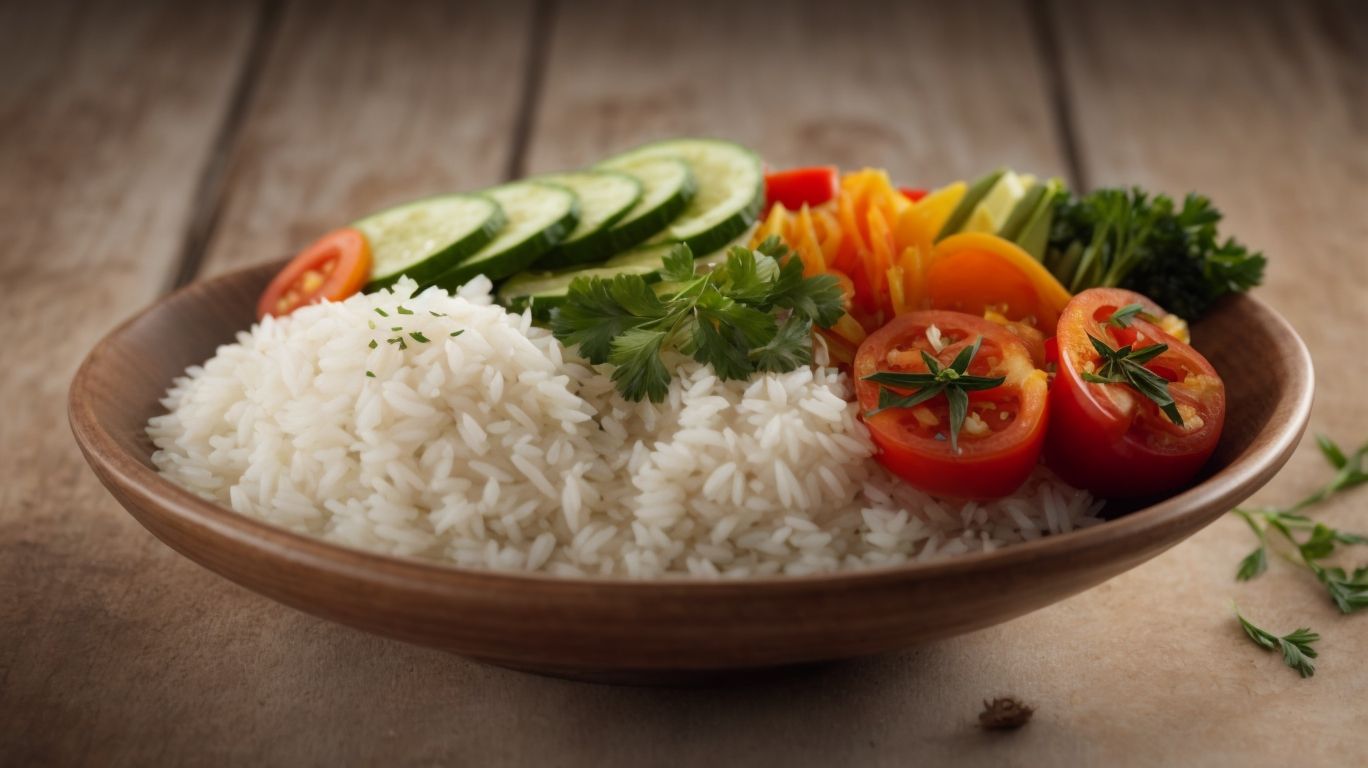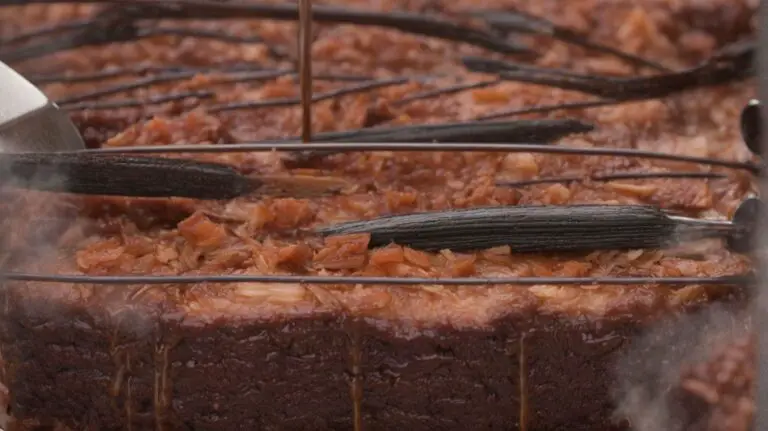How to Cook Jasmine Rice for Fried Rice?
Have you ever wondered what makes Jasmine Rice so special?
Not only does it have a unique flavor and aroma, but it also offers a variety of health benefits.
This article explores what sets Jasmine Rice apart from other types of rice and delves into its many advantages.
It guides you through the process of cooking Jasmine Rice for delicious fried rice, along with some helpful tips to ensure your dish turns out perfectly every time.
Let’s get cooking!
Key Takeaways:
About Jasmine Rice
Jasmine Rice, commonly used in Thai cuisine, is a fragrant and long-grain variety of rice that adds a unique aroma and texture to dishes.
The origins of Jasmine Rice can be traced back to Thailand, where it has been a staple in traditional cooking for centuries. The name ‘Jasmine’ refers to the flower-like aroma that the rice emits when cooked, enhancing the overall sensory experience of a meal. This rice is favored for its soft and slightly sticky texture, making it ideal for pairing with flavorful Thai curries, stir-fries, and other signature dishes.
What is Jasmine Rice?
Jasmine Rice, also known as Thai fragrant rice, is a type of long-grain rice valued for its aromatic qualities and soft, slightly sticky texture.
This rice variety is renowned for its sweet-smelling aroma, reminiscent of pandan leaves or flowers, which adds a delicate and enticing flavor to dishes. The grains, when cooked, cling together, making it perfect for both stir-fries and curries in Thai cuisine. Cultivated primarily in Thailand, Laos, Cambodia, and Vietnam, Jasmine Rice requires specific growing conditions including abundant sunlight, fertile soil, and proper irrigation.
What Makes Jasmine Rice Different from Other Types of Rice?
What sets Jasmine Rice apart from other varieties is its distinct aroma, ability to cook into separate fluffy grains, and its versatility in various dishes, especially in contrast to sticky rice varieties.
One of the most appealing features of Jasmine Rice is its fragrant aroma that resembles a subtle floral scent, adding a unique dimension to any dish it is incorporated into. This aromatic quality is why it is often referred to as ‘fragrant rice’.
When cooked, Jasmine Rice achieves a delicate, slightly sticky texture that holds together while still retaining a light and airy consistency, ideal for pairing with saucy dishes or enjoying on its own.
This rice variety also stands out due to its excellent absorption of flavors, making it a preferred choice for dishes where the rice plays a significant role in enhancing the overall taste.
What Are the Health Benefits of Jasmine Rice?
Jasmine Rice offers health benefits due to its low amylose content, which makes it easier to digest and absorb nutrients. Its fluffy texture comes from a specific water ratio during cooking.
Amylose and amylopectin are the two main components of rice starch.
Jasmine Rice, known for its low amylose content, has a higher proportion of amylopectin, giving it a stickier texture compared to long-grain rice. This composition not only contributes to its unique flavor but also plays a role in its easy digestibility. When cooked with a slightly higher water ratio, Jasmine Rice becomes light and fluffy, making it a versatile option for various dishes. Adjusting the water level can impact the rice’s final texture and nutritional benefits, ensuring that it retains its essential nutrients.
How to Cook Jasmine Rice for Fried Rice?
Cooking Jasmine Rice for fried rice involves rinsing and soaking the rice to remove excess starch, achieving a fluffy texture ideal for absorbing flavors in the stir-fry process.
To start, rinse the Jasmine Rice thoroughly under cold water until the water runs clear. This step helps get rid of the excess starch, preventing the rice from turning gummy. After rinsing, soak the rice in slightly salted water for about 30 minutes to an hour. This soaking period allows the grains to absorb moisture, leading to a more even cooking process.
Step 1: Rinse the Rice
The first step in cooking Jasmine Rice for fried rice is to rinse the rice under cold water until the water runs clear to remove excess starch and prevent the rice from becoming too sticky.
When washing Jasmine Rice, this initial rinsing process is crucial as it not only helps in removing the powdery coating of starch on the grains but also ensures a fluffier and more separate end result. Rinsing the rice can enhance the texture and flavor of the dish by preventing clumping and producing better absorption of flavors during cooking. Rinsing can also contribute to the overall cleanliness of the rice grains, ensuring a cleaner cooking process free from any unwanted debris or impurities. It sets the foundation for a perfectly cooked fried rice that is light, fluffy, and full of flavor.
Step 2: Soak the Rice
Soaking the rinsed Jasmine Rice allows for water absorption and ensures even cooking, resulting in grains that remain separate and fluffy when cooled post-cooking.
By soaking Jasmine Rice, the grains are able to slowly absorb water, leading to a more uniform cooking process. This gentle absorption process allows the rice to cook evenly, avoiding any clumping or stickiness that can occur with unrinsed or unsoaked rice. The water absorption also helps the rice to swell and expand properly, resulting in a light and fluffy texture.
Step 3: Measure the Water
Determining the correct water ratio is crucial for cooking Jasmine Rice perfectly, ensuring the right balance of moisture for fluffy and separate grains.
One common guideline for cooking Jasmine Rice is to use a 1:1.5 water to rice ratio. This means for every cup of rice, you would add 1.5 cups of water. Some prefer a slightly drier texture, opting for a 1:1.25 ratio. It’s important to remember that the amount of water should be adjusted based on various factors like the type of rice, desired texture, and cooking method.
Experimentation and practice are key to finding the perfect water reduction ratio for your preferred rice consistency.
Step 4: Bring the Water to a Boil
Once the water and rice are in the pot, bring them to a simmer, allowing the rice to absorb the water gradually and start the cooking process.
Simmering is a gentle cooking method where the water temperature is just below boiling. As the rice absorbs the water, it swells and softens, releasing starches and developing its familiar texture. This absorption is crucial for the rice to cook evenly and become tender. Simmering also allows flavors to meld together, creating a cohesive and delicious dish. It’s important to maintain the simmer and not let the water boil too rapidly, as this can lead to uneven cooking and a mushy consistency.
Step 5: Add the Rice
Adding the soaked Jasmine Rice to the simmering water begins the cooking process, allowing the grains to soften and expand while absorbing the water’s flavors.
As the rice simmers, the fragrance of Jasmine permeates the kitchen, creating an inviting atmosphere. Stirring occasionally helps prevent sticking and ensures even cooking. During this stage, the rice undergoes a magical transformation, gradually turning fluffy and tender. The simmering water gradually reduces, indicating that the rice is nearing perfect doneness. This method of cooking rice enhances its natural sweetness and delicate aroma, resulting in a delectable dish that pairs perfectly with a variety of savory or spicy mains.
Step 6: Cover and Cook
Covering the pot while the Jasmine Rice cooks ensures steam is trapped within, aiding in achieving fluffy and evenly cooked rice with the desired texture.
When steam is allowed to escape during cooking, the rice may end up dry, unevenly cooked, or stick to the bottom of the pot. By trapping the steam within the pot, the rice grains absorb the moisture evenly, resulting in that perfect fluffy consistency we all crave.
This technique is especially crucial for delicate grains like Jasmine Rice, which require precise cooking conditions to preserve their delicate texture. So, remember to keep that lid on snugly and resist the urge to peek – your rice will thank you with a delightful, mouthwatering outcome!
Step 7: Fluff and Cool the Rice
After cooking, fluffing the Jasmine Rice with a fork and allowing it to cool slightly enhances the texture and separates the grains, ready for use in fried rice or other dishes.
Fluffing the rice helps to aerate it, preventing clumping and creating a light, fluffy texture.
As the rice cools, its starches settle and solidify slightly, aiding in grain separation and preventing excessive stickiness.
It’s important to let the rice cool for a few minutes before using it in a dish to allow the flavors to meld and the grains to firm up.
Properly fluffed and cooled Jasmine Rice serves as the perfect base for absorbing flavors and ingredients in stir-fries, casseroles, or sushi preparations.
Tips for Perfect Fried Rice
Achieving perfect fried rice involves using cold leftover rice, ensuring a quick stir-fry with vibrant vegetables and flavorful sauces, embracing the essence of Asian cuisine.
One essential tip is to spread out the leftover rice on a tray and refrigerate it to let it dry out, making it ideal for frying without clumping. To infuse authentic Asian flavors, consider using ingredients like soy sauce, oyster sauce, and sesame oil for that umami richness.
To enhance the texture, try adding beaten eggs near the end of the cooking process, allowing them to gently coat the rice. For a pop of color and freshness, garnish with chopped scallions or cilantro before serving. Remember, the key to successful fried rice is high heat and constant stirring to achieve that coveted wok hei flavor.
Tip 1: Use Cold Rice
Using cooled leftover rice from previous meals ensures the grains remain separated during the stir-frying process, preventing a mushy texture and enhancing the dish’s overall flavor.
When rice is freshly cooked, it tends to be moist and sticky, which can lead to clumping when fried. By allowing the rice to cool, the grains dehydrate slightly, creating a drier texture that is ideal for absorbing flavors and retaining its shape.
Cooling the rice also helps in reducing the excess moisture content, preventing sogginess in the fried rice.
Cooled rice is firmer, making it easier to toss and coat with the seasonings and ingredients evenly, ensuring a well-balanced distribution of flavors throughout the dish.
Tip 2: Stir Fry the Rice
The key to excellent fried rice lies in the art of stir-frying the ingredients together swiftly, ensuring even heat distribution and optimal flavor infusion throughout the dish.
When stir-frying for fried rice, it’s crucial to have all your ingredients prepped and ready to go before you even turn on the heat. The high heat used in this cooking technique allows for a quick cooking process, so having everything within arm’s reach is essential.
Ingredient cohesion is vital in ensuring that every grain of rice is perfectly coated with the flavors from the other components. Make sure to evenly distribute your proteins, vegetables, and aromatics throughout the rice to achieve a harmonious blend of tastes and textures.
Tip 3: Use High Heat
Employing high heat during the frying process helps achieve the desired texture and flavor profile, allowing ingredients to caramelize and develop rich, savory notes in the dish.
When cooking rice, using high heat in the initial stages of the frying process is crucial for creating that perfect crunchy yet tender texture. The high temperature triggers the Maillard reaction, resulting in the browning of proteins and sugars, which imparts a complex depth of flavor to the dish. In addition, the intense heat helps seal in the moisture of the ingredients, ensuring they remain juicy and succulent. The choice of cooking oil plays a vital role in pan-frying. Opt for oils with high smoke points like avocado or peanut oil to prevent them from burning and imparting a bitter taste to your dish.
Frequently Asked Questions
What is the best type of rice to use for fried rice?
Jasmine rice is the ideal type of rice to use for fried rice due to its ability to stay fluffy and separate when cooked.
How much water should I use to cook jasmine rice for fried rice?
The general rule of thumb is to use a 1:1.5 ratio of rice to water when cooking jasmine rice for fried rice.
Should I rinse jasmine rice before cooking it for fried rice?
It is recommended to rinse jasmine rice before cooking it for fried rice to remove excess starch and ensure a fluffy texture.
What is the best way to cook jasmine rice for fried rice?
One of the best ways to cook jasmine rice for fried rice is to use the absorption method, where the rice is cooked in a covered pot with a specific amount of water.
How long does it take to cook jasmine rice for fried rice?
On average, it takes about 18-20 minutes to cook jasmine rice for fried rice. However, this may vary depending on the type of stove and cooking method used.
Can I use leftover jasmine rice for fried rice?
Absolutely! Leftover jasmine rice is perfect for making fried rice as the grains will already be slightly dry, making it easier to achieve the desired texture for fried rice. Just make sure to keep it in the fridge and use it within 2-3 days.







